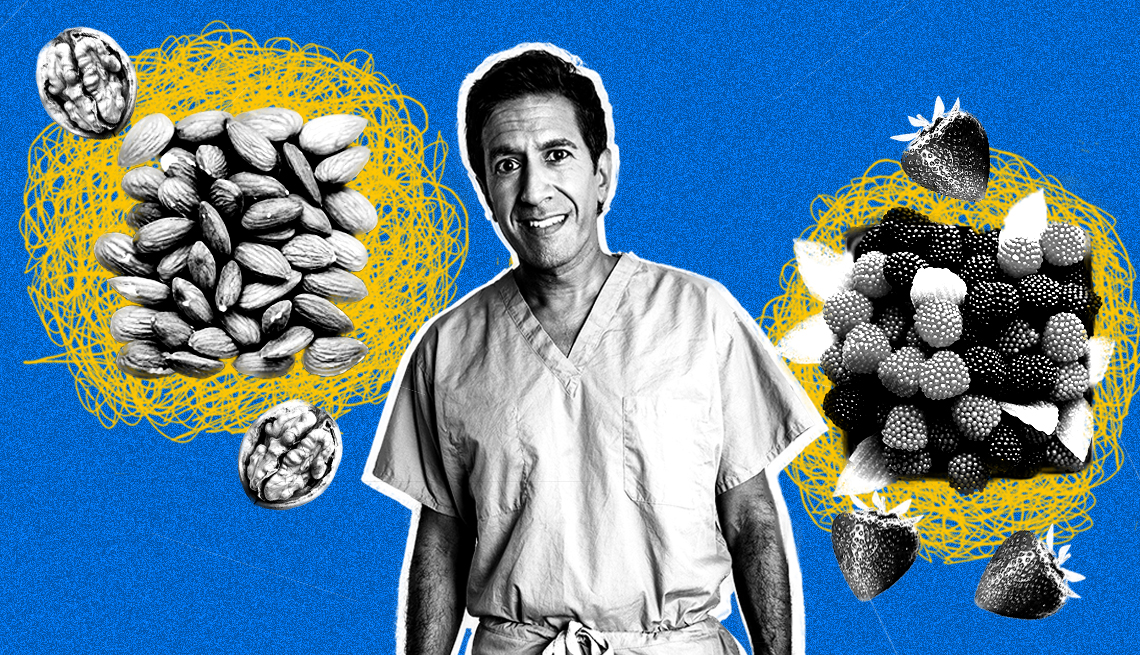AARP Hearing Center
Sanjay Gupta, M.D., is a neurosurgeon and CNN’s Emmy Award–winning chief medical correspondent. His latest book, Keep Sharp: Build a Better Brain at Any Age, published by Simon & Schuster in cooperation with AARP, is based in part on the work of the Global Council on Brain Health convened by AARP. In this audio clip, Dr. Gupta reads Chapter 7, "Food for Thought," in which he takes on the great plate debate. The book is available to purchase here.
Audio excerpt courtesy of Simon & Schuster Audio from 'KEEP SHARP' by Sanjay Gupta, M.D., read by the author. Copyright © 2021 by Sanjay Gupta, M.D. Used with permission from Simon & Schuster, Inc.



































































